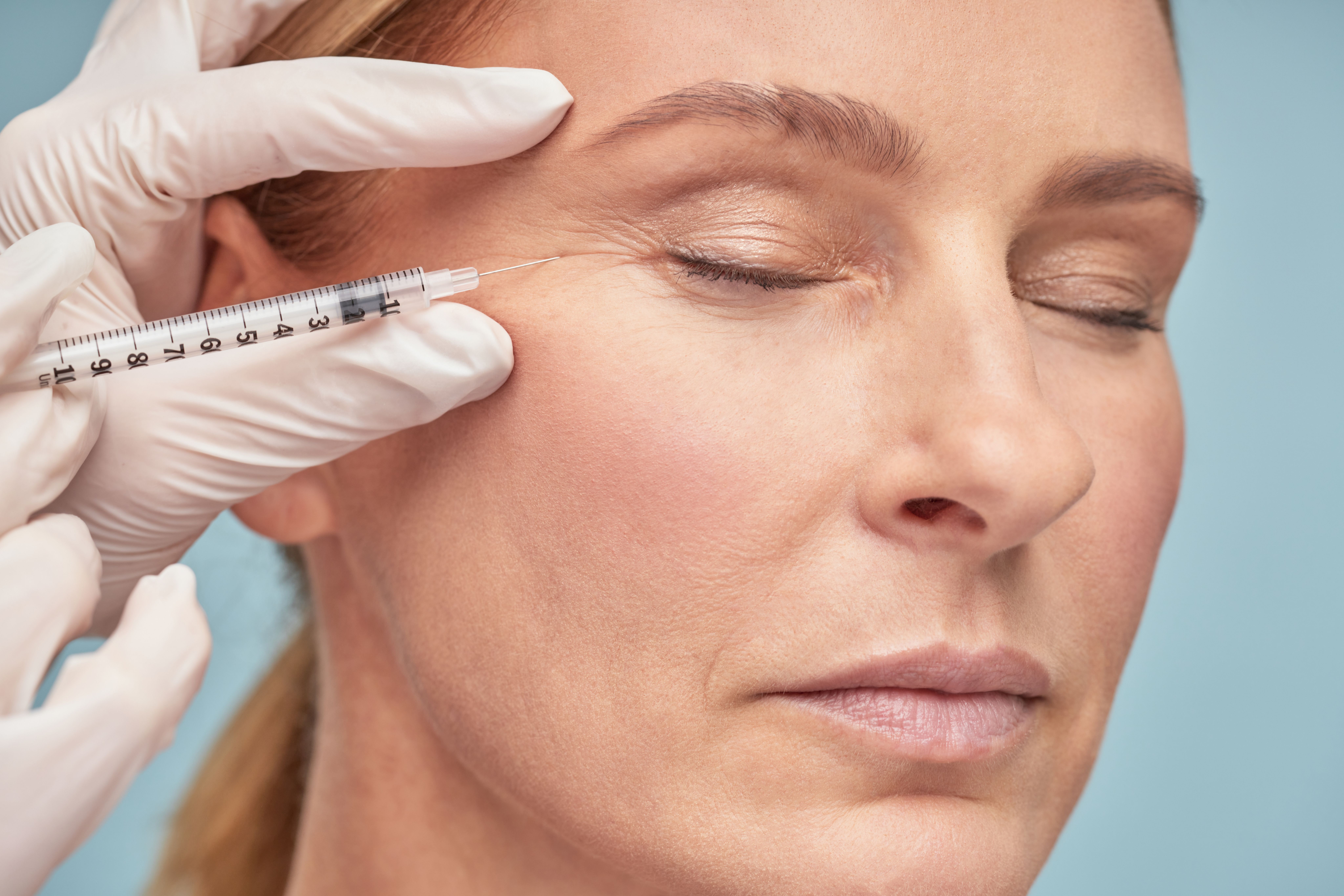- Case-Based Roundtable
- General Dermatology
- Eczema
- Chronic Hand Eczema
- Alopecia
- Aesthetics
- Vitiligo
- COVID-19
- Actinic Keratosis
- Precision Medicine and Biologics
- Rare Disease
- Wound Care
- Rosacea
- Psoriasis
- Psoriatic Arthritis
- Atopic Dermatitis
- Melasma
- NP and PA
- Skin Cancer
- Hidradenitis Suppurativa
- Drug Watch
- Pigmentary Disorders
- Acne
- Pediatric Dermatology
- Practice Management
- Prurigo Nodularis
- Buy-and-Bill
News
Article
Hyaluronic Acid-Based Fillers Effective in Treating Signs of Aging
Author(s):
Multiple microinjections significantly improved signs of aging up to 12 weeks after initial injection.
To assess the safety and efficacy of hyaluronic acid (HA)-based fillers to improve signs of aging, researchers conducted a prospective study of 20 patients.1 Lee et al found that multiple microinjections of HA-based gel filler were safe and effective for treating facial signs of aging.
Kostiantyn/AdobeStock

Female patients aged 30 to 60 years (mean age 54.1 years) were included in the single-arm, open-label pilot study. Before the first injection at the initial visit, biophysical parameters of aging were measured and facial photographs were taken. Measured parameters included skin roughness, fine wrinkles, skin elasticity, facial lifting, skin pores, transepidermal water loss (TEWL), skin glossiness, and skin hydration.
Participants received a baseline injection at visit 1 (week 0), which was followed by 2 more injections, 2 weeks apart. The second injection was given at visit 2 (week 2) and the third injection was given at visit 3 (week 4). Follow-up assessments were performed 2, 4, and 8 weeks after the last injection.
The treatment area was 1 cm below the lower orbital rim to the lower cheek margin, and the gel was administered in small (.05 mL) volumes. Byryzn Skinbooster HA (Across Co, Ltd) was used in the study.
The primary endpoint to evaluate efficacy of the gel was the improvement in wrinkle scale at weeks 6, 8, and 12. From baseline to week 8, a 40.4% decrease in mean Lemperle wrinkle scale was seen (from 2.60 ± 0.60 at baseline to 1.55 ± 0.51 at week 8). Improvement was maintained at approximately 33% until week 12. At week 12 improvement over baseline was 12.4%.
Skin elasticity improved significantly, from .66 ± .05 artificial units (AU) at baseline to .70 ± .05 AU at week 8 and to .73 ± .04 AU at week 12. Facial curved length and skin pore size also improved significantly.
Eighteen of the participants showed a greater than or equal to 1-point improvement on the Lemperle wrinkle scale at week 8, and 12 participants showed a greater than or equal to 1-point improvement on the Lemperle wrinkle scale at week 12. Skin hydration increased significantly, from 43.06 ± 9.25 AU at baseline to 63.03 ± 7.88 AU at week 12.
Statistically significant improvements were observed over baseline in height of wrinkles, average skin roughness, skin elasticity, facial curved length, and skin pore size. Adverse events were mostly mild and transient, with the most common AE being injection site bruising.
The limitations of the study included the small sample size and lack of a control group, as well as the absence of male participants. The short follow-up period was another limitation.
The authors concluded that, “the present study demonstrated that transdermal injections of HA-based gel filler are safe and effective in improving the quality of facial skin in terms of wrinkles, elasticity, pores, hydration, and glossiness.”
Reference
- Lee JH, Kim J, Lee YN, et al. The efficacy of intradermal hyaluronic acid filler as a skin quality booster: A prospective, single-center, single-arm pilot study. J Cosmet Dermatol. 2023;00: 1-8. doi:10.1111/jocd.15944





